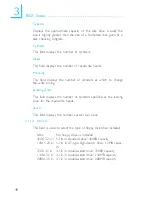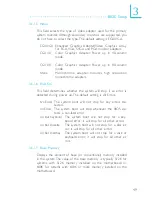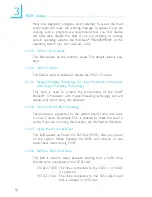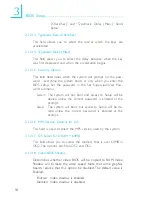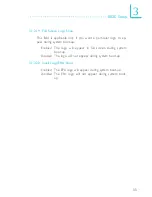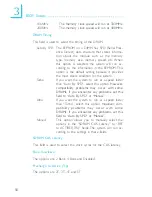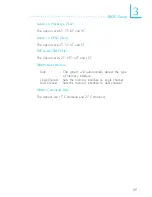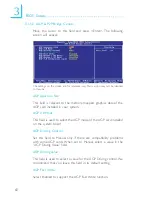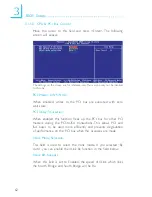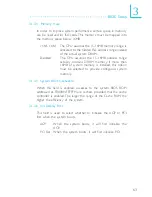
53
3
BIOS Setup
If only one of the interfaces is connected with a device(s), you
don’t need to particularly select an option in this field because
the system will automatically detect for the existing drive.
3.1.2.9 First Boot Device, Second Boot Device, Third Boot Device
and Boot Other Device
Select the drive to boot first, second and third in the “First Boot
Device” “Second Boot Device” and “Third Boot Device” fields
respectively. The BIOS will boot the operating system according
to the sequence of the drive selected. Set “Boot Other Device”
to Enabled if you wish to boot from another device.
3.1.2.10 Boot Up Floppy Seek
When enabled, the BIOS will check whether the floppy disk drive
installed is 40 or 80 tracks. Note that the BIOS cannot distinguish
between 720K, 1.2M, 1.44M and 2.88M drive types as they are all 80
tracks. When disabled, the BIOS will not search for the type of
floppy disk drive by track number. Note that there will not be any
warning message if the drive installed is 360KB.
3.1.2.11 Boot Up NumLock Status
This allows you to determine the default state of the numeric
keypad. By default, the system boots up with NumLock on
wherein the function of the numeric keypad is the number keys.
When set to Off, the function of the numeric keypad is the ar-
row keys.
3.1.2.12 Typematic Rate Setting
Disabled
Continually holding down a key on your keyboard
will cause the BIOS to report that the key is down.
Enabled
The BIOS will not only report that the key is down,
but will first wait for a moment, and, if the key is still
down, it will begin to report that the key has been
depressed repeatedly. For example, you would use
such a feature to accelerate cursor movements with
the arrow keys. You can then select the typematic
rate and typematic delay in the “Typematic Rate










